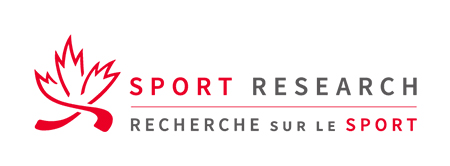Data Infographics
Harnessing data can help your organization create compelling content to share with your members and other key stakeholders. Here are two great examples: Apline Canada recently released this infographic with highlights from their 2018/2019 season. The Tour de France, which wraps up this weekend, created this infographic featuring stats about the 2019 course, riders and…
Concussion Newsletter – July 2019
SIRC’s monthly concussion newsletter is the go-to source for best practices from Canadian and international sport organizations, practical tools, and recommended resources from Sport Canada and the Public Health Agency of Canada. The July edition highlights Artistic Swimming Canada’s data-driven approach to concussion management and prevention, B.C.’s Concussion Awareness Training Tool (CATT), and SIRC’s new video…
Concussion Blog – Artistic Swimming
Most Canadians would not consider artistic swimming a contact sport, but athletes and coaches know the risks. The physical demands, technical components and water environment of the sport require unique concussion policies and practices, especially related to athletes’ “Return to Sport.” Learn more in today’s SIRC blog.
Safe Sport Consultation
To address abuse and harassment in sport, the Coaching Association of Canada is leading a consultation process to explore the creation of a pan Canadian code of conduct and associated sanctions. To complement a series of in-person consultations, an online survey has been launched to increase the reach of the process. To share your thoughts…
Sleep Infographic
Today is World Sleep Day. Are Canadians getting enough sleep? According to the Public Health Agency of Canada, 1 in 2 adults have trouble going to sleep or staying asleep; 1 in 5 adults do not find their sleep refreshing; and 1 in 3 adults have difficulty staying awake during waking hours. Find out more…
Curling Brush Head Technology
In 2016, after a season of controversy, the World Curling Federation (WCF) and Canada’s National Research Council (NRC) investigated the effects of curling brush head technology on ice surfaces and their potential effects on where stones come to rest. During three days of testing, the NRC’s ice and materials technologies experts analyzed various manufacturers’ broom…
Issues in Athlete Identification and Selection: Are We Compromising Talent?
Despite some important ethical and developmental concerns, early identification and selection is the modus operandi of high performance sport. Most sport systems internationally have limited resources for high performance athlete development and, as a result, have to make predictions about who has the greatest likelihood of future success. Notions of talent also play critical roles…
Marginal Gains Reconsidered: How Sport Organizations Hold the Key to Boosting Sport Performance
The “aggregation of marginal gains” has become such a catchphrase that people have stopped questioning what it means. Science is meant to question, not to follow, and to look for the truth where it otherwise might be missed. What are “marginal gains”, really? Why have we been trained to look for them? How do they…
Using Membership Data to Inform Decision-Making: A sport management approach

In sport, data is commonly used to asses and improve an athlete or team’s performance; however, the usage of membership data to inform decision-making at the National, Provincial/Territorial or club level is still relatively unexplored. Membership data can be program or demographic information that relates to athletes, coaches or volunteers. Some sport administrators tend to…
Sport Participation Research Initiative: 10 years in review

The purpose of this presentation by Sport Canada was to provide an overview of the retrospective analysis of the first 10 years of the program encouraging sport participation research in Canada. The review was intended to understand: Amount of research undertaken; What research was published or shared; Theme areas researched; Sport Canada’s SPRI investments in…